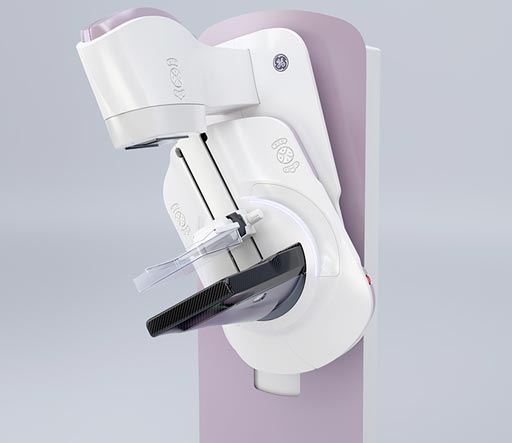Mammography System Enables Patients to Control Compression
By MedImaging International staff writers
Posted on 14 Sep 2017
The first mammography system that allows patients to control the amount of breast compression using a remote control has been awarded US FDA 510(k) clearance.Posted on 14 Sep 2017
Mammograms are sometimes uncomfortable, or even painful, but using the new innovative remote control device women can manage the amount of compression themselves during an exam.

Image: The Senographe Pristina mammography system (Photo courtesy of GE Healthcare).
The Senographe Pristina Dueta system was developed by GE Healthcare (Chalfont St Giles, Buckinghamshire, UK) for use with the newly designed Senographe Pristina mammography system. The goal of the engineers when designing the system was to reduce the pain and anxiety associated with a mammography exam, to increase the number of annual screening exams, and to improve the outcomes for breast cancer screening. The Senographe Pristina also has rounded edges, a thinner image detector, and armrests.
The new patient-assisted compression feature allows women undergoing a screening exam to control the amount of compression, and adjust the compression paddle themselves, based on the comfort level, using a wireless remote control.
Medical director of the Boca Raton Regional Hospital, Christine E. Lynn Women’s Health & Wellness Center, Dr. Kathy Schilling, said, "This is a new age in breast imaging. Patients who used the remote control said the exam was more comfortable and they were visibly more relaxed. Any breast radiologist knows that when patients are relaxed, we are able to get better images and better images lead to a more confident diagnosis. My hope is that increasing comfort during the exam and giving patients the option of working with the technologist to set their own compression will increase compliance, enable early detection and improve outcomes."














